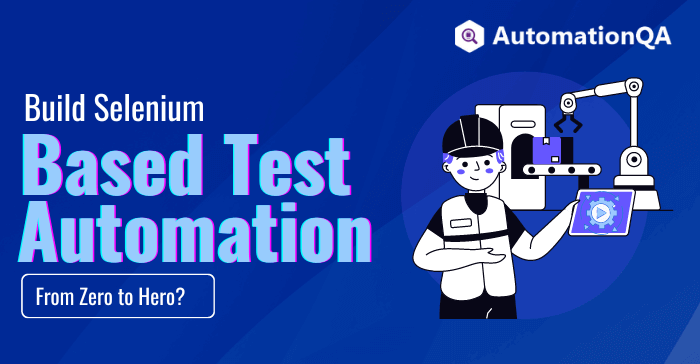
Test automation is one of the crucial aspects of software development, ensuring that your application functions as expected. And, Selenium is a popular open-source framework employed for automating web applications, offering support for various programming languages and operating systems.
In this blog, we will explore the steps for building a Selenium-based test automation framework. From setting up the environment to writing and executing tests, we will cover all the necessary elements to get you started with automating your web application tests using Selenium.
“Accelerate your testing journey by unlocking the power of automation with Selenium.”
What Is Selenium?
Selenium, an open-source suite of tools, allows developers to write scripts in multiple programming languages such as Python, Java, C#, and JavaScript to interact with web pages and perform numerous tasks. Selenium is useful for a variety of purposes, such as web scraping, browser automation, and testing web applications.
What is the Selenium library and its role in automation testing?
The process begins something like this-
Test script creation: Using the Selenium API, developers write test scripts that simulate user interactions with the web application and validate its functionality.
Test suite execution: The test scripts are grouped into test suites and executed in a controlled environment.
Test reports and analysis: Selenium generates test reports and allows analysis of test results to identify areas of improvement in the application.
By automating testing, Selenium reduces the time and cost associated with manual testing and helps ensure the quality and reliability of web applications.
Steps To Build Selenium-Based Test Automation
Look For Components Availability
Selenium automation testing requires components such as Eclipse, WebDriver Language binding, and Java (JDK). First, prepare all these components and then configure Selenium WebDriver and Eclipse. Once you’re done with that, it’s time to write the first test script for a trial run.
Signing Up To The Selenium Grid
For running or creating the Selenium test scripts, you need a Selenium grid such as BrowserStack, Katalon Studio, Parasoft SOAtest, Ranorex Studio, Visual Studio Test Professional, Tricentis NeoLoad, Micro Focus UFT One, and others.
We recommend you go for the BrowserStack grid for easy Selenium integration. It also enables testing for mobile applications, websites, and web applications across multiple devices and browsers. Signup in BrowserStack or any other grid to write test scripts.
Look For Automate Tab Under Grid Menu
Once you ensure that Selenium configuration and components are installed properly, look for an automated tab in your grid. Locate that and click on that. After you click on that, it will ask you to configure, integrate and do the test run. The step-by-step process facilitates the configuration of tests or writing the Selenium test script.
Addition Of Required Codes
It is equally essential for a tester to ensure that a specific set of codes are present in the test script while creating Selenium-based test automation tools. If it is not done correctly, the automation test run will face errors later.
For that, prepare a WebDriver code that must be based on the logic of the test case. The necessary codes required are package import codes, browser session ending codes, program ending codes, browser session launch codes, and acquiring page title codes.
Here, you might need to change these codes depending on browser requirements. It’s the responsibility of the team to work in sync to have all the required codes before automation.
Final Integration With Selenium Grid
Once you have made the changes in the code according to the test case logic or website, it’s time to integrate with the grid with or without the Selenium extension.
If you choose the BrowserStack guide, it makes the whole process of writing the test scripts easy, thanks to the availability of templates. Its features continue. It allows driver setting and default integration.
After this step, you can retrieve the test script in one shot. Download the script to the Eclipse menu bar.
Now it’s time to run the entire test code in anticipation of feedback “Test Passed”. If you did not get the passed feedback, the Selenium test script is not executed adequately over the grid.
Concluding Remark
Building Selenium-based test automation calls for meticulous planning and execution. You can build a robust and reliable test automation framework by following the steps outlined in this blog post, including selecting a programming language, setting up the development environment, writing test cases, and integrating with a continuous integration tool. With increased efficiency, reduced manual effort, and improved software quality, the investment in Selenium-based test automation is well worth it.
AutomationQA
Latest posts by AutomationQA (see all)
- AI-Powered Self-Healing Test Automation for Mobile Apps - March 27, 2025
- How to Boost Your Cypress Testing with Component and Parallel Execution - March 21, 2025
- Migrating Test Suites to Modern Testing Frameworks: A Comprehensive Guide - March 18, 2025
